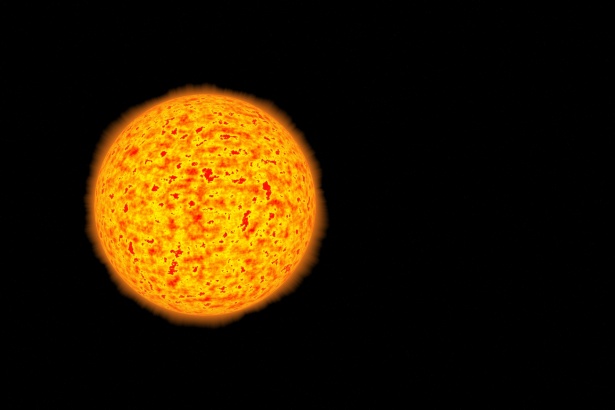Global warming and its detrimental impacts on society and Earth’s natural systems have become an ever-urgent issue for humanity to confront. According to the U.N.’s World Meteorological Organization, there is a 50–50 chance we will reach 1.5 degrees Celsius of warming within the next five years with the likelihood continuously increasing. As the reality of a hotter climate sets in, scientists and governments are becoming more creative and possibly rash in their methods of mitigation. One such “solution” that has gained popularity in recent years is solar geoengineering. Solar geoengineering refers to emerging technologies that would decrease the amount of sunlight entering Earth’s atmosphere and increase the amount of radiation Earth sends into space. According to Harvard’s Solar Geoengineering Research Program, one of the most common forms of this technology is stratospheric aerosol scattering, the process of injecting small reflective particles such as sulfate aerosols into the upper atmosphere where they reflect sunlight back into space.
Funding for solar geoengineering research has been generally very minimal. According to an article published in the Proceedings of the Royal Society A, solar geoengineering received about eight million dollars of funding for research in 2017 and 2018. This was only a fraction of the 3.8 billion dollars spent on climate research in the U.S. However, national and international organizations have recently called for greater research funding. The U.S. National Academies stated that further research about the effects of solar geoengineering could help scientists learn more about Earth’s climate systems, an area that should be well understood to properly assess the impacts of climate change. The U.N. also expressed the potential importance of solar geoengineering through an Intergovernmental Panel on Climate Change Special Report on 1.5 degrees warming, which states with “high agreement” that stratospheric aerosol injection could limit warming below 1.5 degrees. Importantly though, such solar geoengineering efforts are not alternatives to emissions reductions but are rather complementary. Stratospheric aerosol injection would have a varying cooling effect based on season, daytime, and latitude, with the ideals being summer, midday, and low latitudes. Meanwhile, greenhouse gasses from emissions trap Earth’s radiation at a more constant rate. Solar geoengineering may therefore be helpful in combination with emissions reductions.
If solar geoengineering is to be considered or accepted as a potential mitigation strategy for fighting climate change, more needs to be known about its impacts. For instance, there is debate over whether solar geoengineering, and stratospheric aerosol injection in particular, will even be effective. An article published in 2022 by the Proceedings of the National Academy of Sciences found that the effectiveness of aerosol injection could be masked by Earth’s natural climate variability, and local or even regional temperatures could continue to increase. The study looked at climate models over 10 years and found that 55% of the global population, in large nations like the U.S., China, India, and the EU could still experience higher temperatures, even as the global average temperature decreases. The consequences and impacts of this technology on Earth’s natural climate systems are relatively unexplored, which is why greater funding and research are being requested as solar geoengineering becomes more mainstream.
“Moreover, literature has found concern that people will misconceive solar geoengineering as a solution to climate change and disregard their carbon emissions when the technology is intended to be an addition to emission reductions.”
Moreover, if solar geoengineering was to be deemed useful or even necessary to fighting the climate crisis, its implementation is not guaranteed because of the international political complications it entails. For instance, how many countries would have to agree on this new technology for it to be implemented? Would nations most affected by global warming have greater say in the matter because they have the most current vested interest? How would nations agree on a target amount of cooling? With all of these international political challenges, it is uncertain whether solar geoengineering is likely to occur. Some believe that localized geoengineering, such as changing landscapes to increase their albedo, or reflectivity, is an effective workaround for policy issues.
The U.N. also expressed the potential importance of solar geoengineering through an Intergovernmental Panel on Climate Change Special Report on 1.5 degrees Celsius warming, which states with “high agreement” that stratospheric aerosol injection could limit warming below 1.5 degrees.”
“if solar geoengineering was to be deemed useful or even necessary to fighting the climate crisis, its implementation is not guaranteed because of the international political complications it entails”
In addition to logistical political challenges, there are also ethical questions about solar geoengineering that should be addressed. For instance, solar geoengineering doesn’t solve other environmental issues like ocean acidification, which causes inhospitable ocean temperatures for marine ecosystems, leading them to collapse. Moreover, literature has found concern that people will misconceive solar geoengineering as a solution to climate change and disregard their carbon emissions when the technology is intended to be an addition to emission reductions. Potentially the most challenging ethical dilemma is whether continued human manipulation of the climate is necessary, or if we should instead stay away from interfering further in Earth’s natural processes.
Image courtesy of Public Domain Pictures






